Permaculture: [Concept, Principles, Origins and History]
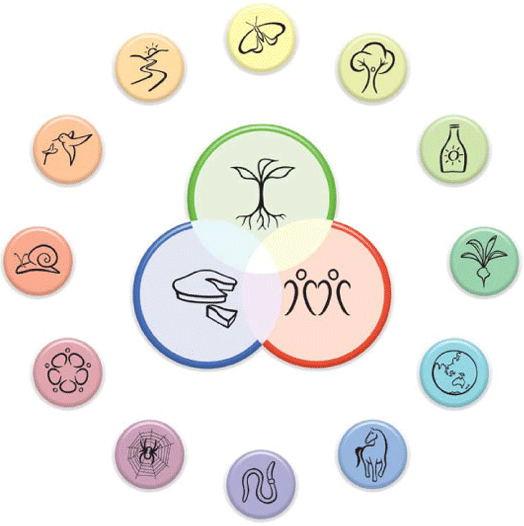
“Permaculture” is a term originally coined by Bill Mollison and David Holmgren in 1978 to describe an integrated and evolving system of perennial or self-perpetuating plants and animal species useful to humans.
What is permaculture?
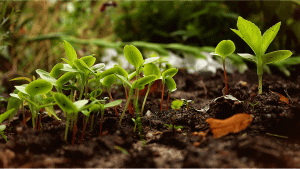 Permaculture is a design system founded on ethics and principles that can be used to establish, design, coordinate and improve all efforts made by individuals, households and communities working for a sustainable future.
Permaculture is a design system founded on ethics and principles that can be used to establish, design, coordinate and improve all efforts made by individuals, households and communities working for a sustainable future.
The word permaculture is a contraction, which originally referred to permanent agriculture, inspired by the philosophy of Natural Agriculture of the Japanese farmer, biologist and philosopher, Masanobu, Fukuoka.
Later, it was expanded to also mean permanent culture, because it has been studied and analyzed that social aspects are an integral part of a truly sustainable system.
It is important to note that there are many definitions of permaculture as it is adaptable to different cultures and worldviews.
However, Bill Mollison defines it as:
“A philosophy of working with nature, instead of against it; of prolonged and thoughtful observation instead of prolonged and inconsiderate action, of looking at systems in all their functions instead of just expecting performance, and of allowing systems to demonstrate their own evolutions.”
What are the ethical principles of permaculture?
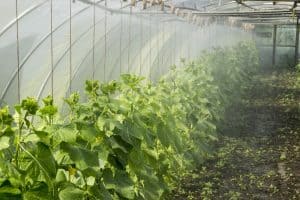 The principles of permaculture are brief statements or slogans that can be remembered like a shopping list when we consider the inevitable complexity of design options and the evolution of ecological support systems.
The principles of permaculture are brief statements or slogans that can be remembered like a shopping list when we consider the inevitable complexity of design options and the evolution of ecological support systems.
There are no standard recipes or models for Permaculture, but there are design principles and simple ethics that are the basis on which everything is based.
The ethical principles are: take care of the earth, take care of the people and share resources.
Caring for the earth means caring for living and inanimate beings: soils, species and their varieties, atmosphere, forests, microhabitats, animals and water, which implies carrying out harmless and rehabilitative activities, active conservation and ethical use of resources..
Caring for people stimulates mutual help between people and communities, taking into account the basic needs of food, shelter, education, satisfactory employment and human contact.
If we can provide our basic needs we don’t need to do large-scale destructive practices against the earth.
Sharing resources is the contribution of time and energy to achieve the objectives focused on caring for the earth and the people.
Ethical principles include attitudes such as: Working with nature, not against it; the problem is the solution; minimum change for maximum effect, everything affects everything and the performance of a system is theoretically unlimited.
What are the design principles of permaculture?
The 12 principles of permaculture are the fundamental concepts for building a sustainable society, created by David Holmgren in his book » Permaculture: Principles & Pathways Beyond Sustainability » published in 2002.
David Holmgren is co-creator of the concept of permaculture along with Bill Mollison. David organized the diversity of permaculture thinking into 12 design principles, a varying set of principles used by other permacultures.
Observe – interact
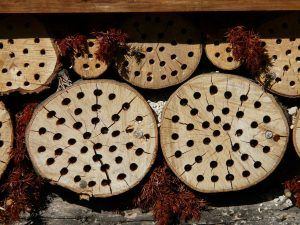 “Beauty is in the eyes of the beholder”. If you take the time to interact with nature, we can design solutions suitable for our particular situation.
“Beauty is in the eyes of the beholder”. If you take the time to interact with nature, we can design solutions suitable for our particular situation.
Capture and store energy
«Dry the grass while the sun shines. » Through the creation of resource harvesting systems during times of plenty, we could use them in times of scarcity.
get a performance
«You can’t work on an empty stomach. » It ensures that you are getting really useful rewards as part of the work you are doing.
Self-regulation and feedback
«The sins of the fathers are punished in the children to the seventh generation. «
We need to discourage inappropriate activities to ensure systems continue to function well.
Use and value renewable services and resources
 «Let nature take its course. » Take advantage of the abundance of nature to reduce our consumer behavior and dependence on non-renewable resources.
«Let nature take its course. » Take advantage of the abundance of nature to reduce our consumer behavior and dependence on non-renewable resources.
stop producing waste
“Avoiding the production of waste avoids generating shortages” – “Prevention is better than cure” Valuing and using all the resources that are within our reach, nothing is wasted.
Design from patterns to details
«The tree does not let see the forest». If you take a step back, you will observe patterns in nature and in society. These can form the basis of designs, with details filled in, as you go.
Integrate rather than segregate
«Many hands lighten the work.»
By putting the right things in the right places, relationships develop between those things and they complement each other to support each other.
Use slow and small solutions
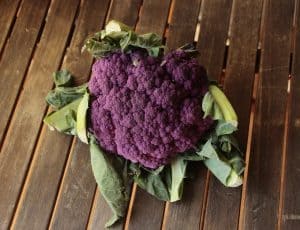 «The bigger, the harder the fall.» – “Slow and sure wins the race” Small and slow systems are easier to maintain than larger ones, make better use of local resources and produce more sustainable results.
«The bigger, the harder the fall.» – “Slow and sure wins the race” Small and slow systems are easier to maintain than larger ones, make better use of local resources and produce more sustainable results.
Use and value diversity
«Don’t put all your eggs in one basket. » Diversity reduces vulnerability to a range of threats and takes advantage of the unique nature of the environment in which it resides.
Use the edges and value the marginal
«Don’t think you are on the right path just because it is a known path.»
Creatively uses and responds to change
“Vision is not seeing things as they are but as they will be”. We can have a positive impact on inevitable change by watching it carefully and intervening at the right time.
What are layers in permaculture?
In permaculture and agroforestry, 7 layers of edible plants and trees are distinguished.
In this way, different types of plants and trees grow mixed with each other, like in a forest. This creates an ecosystem of its own and is in this optimal form, for the soil and the water supply on earth.
The 7 layers are:
- Layer of tallest trees (“The canopy).
- Low tree layer (dwarf fruit trees).
- Shrubs.
- Plants, herbs (“Herbaceous”).
- Plants with edible roots (“Rhizosphere (root crops)”).
- Above the surface (Soil surface (cover crops)).
- Vertical layer, Climbing plants, (“Vertical layer (climbers, vines)”).
Many times an eighth layer is also distinguished, the layer of fungi.
What is permaculture flower?
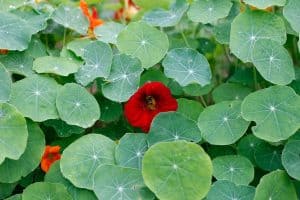 In their conception, Mollison and Holmgren establish 7 areas in which to work and act to overcome the collapse and create truly sustainable and permanent societies.
In their conception, Mollison and Holmgren establish 7 areas in which to work and act to overcome the collapse and create truly sustainable and permanent societies.
These work areas are:
1-. culture and education; two-. Health and spiritual well-being; 3-. Finance and economics; 4-. Land tenure and community governance; 5-. land and nature stewardship; 6-. built environment; 7-. Tools and technologies.
All together they give shape to what is known as a permaculture flower and each of these areas are known as petals, all of them are related and contain multiple facets and areas of work.
It requires starting to work on a personal and then a social level; at the local and then territorial level. A growth that is sustainable because it is based on ethical principles and principles of attitude.
What is integral permaculture?
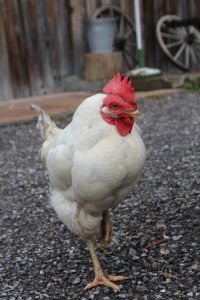 Integral permaculture is a design practice based on a holistic and ethical science that includes all levels of experience – internal and external, individual and collective, ancient and modern – united into a coherent and systemic whole, with the sole purpose of design. healthy and sustainable cultures and environments for all species.
Integral permaculture is a design practice based on a holistic and ethical science that includes all levels of experience – internal and external, individual and collective, ancient and modern – united into a coherent and systemic whole, with the sole purpose of design. healthy and sustainable cultures and environments for all species.
Integral permaculture specifically returns to giving the other components equal importance in the design, using the best science we know as a foundation.
Therefore, permaculture has always been, in theory, and since its origins, Integral, but in practice, unfortunately, it almost never is. And its origins are also quite patriarchal, but in Integral Permaculture we incorporate the great contribution of many brilliant women who are often ‘forgotten’ along the way.
The Integral Permaculture Academy is a world pioneer in expanding the core design course curriculum to incorporate these changes, launching Integral Permaculture.
Origins and history of permaculture?
The origin of permaculture dates back to the 1970s, when two Australian environmentalists, Bill Mollison and David Holmgren, began developing a series of ideas that they hoped to use in creating stable agricultural systems.
This was his response to the increasingly frequent use of destructive agro-industrial methods, popular after World War II, but which “according to his criteria were poisoning the land and water, drastically reducing biodiversity, and destroying billions of tons of soil that they previously maintained fertile landscapes.”
The result was an idea of ’permaculture’, which was unveiled in the provocative and highly successful Australian book Permaculture One (1978). A magazine called The International Permaculture Magazine also appeared, a mini-series with Bill Mollison as its lead.
Beginning in the late 1970s and early 1980s, Mollison taught dozens of courses that internationalized permaculture and its principles.
Bibliography:
- Agrhumus.com Version and summary of the Essence of Permaculture. Reproduced from: https://www.agrhumus.com/que-es-la-permacultura/ PDF.


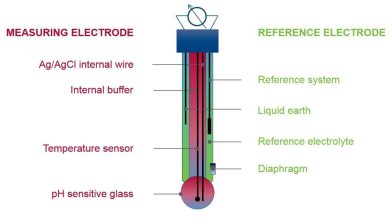

![Photo of Prune Dipladenias: [Importance, Time, Tools, Considerations and Steps]](https://www.complete-gardening.com/wp-content/uploads/2021/06/Podar-Dipladenias-390x220.jpg)